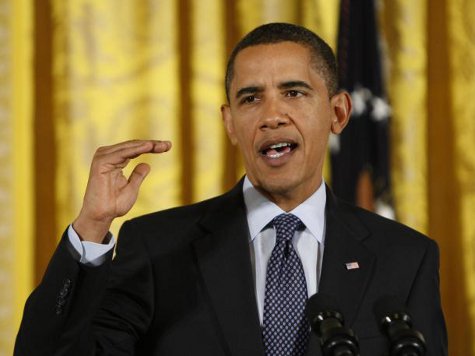The progressive press has been forced to respond to challenges of their polling data that shows record turnout for Democrats in national polls and in swing states.
Nate Silver, gatekeeper of polls for the New York Times, called the attempt to debate polling data an episode of “attacking the messenger.” A headline under a photo of two Obama yard signs states: “The 2008 race was a good one for polls: they got Barack Obama’s margin of victory exactly right.” A big self-congratulatory pat on the back for the mainstream media!
Silver then wastes his time by doing a history of all of final polls before elections and how they closely mirror the end result. Of course, we aren’t debating the final polls. It’s obvious pollsters will attempt to get the number right when their credibility is on the line. We are debating polls that happen before the final poll. Right now, these polls drive narratives like “Romney is losing!” and “Wow, women sure love Obama!” and fill newspaper headlines for weeks. So a history lesson on the polls no one is complaining about misses the point.
If Silver had decided to look at what polls from NYT and CBS were saying before their final poll in 2008, he would see that they had Obama winning by 14 early in October. That number would then drop to 13 in mid-October, and then 11 by the end of the month. The final CBS poll would settle in at 9 points, two points higher than Obama’s final margin of victory. So yes, the “final” poll was within 2 points of getting the vote right. But the one taken less than 4 weeks earlier had estimated his lead by more than double what actually happened. I’m guessing Nate Silver would have a great explanation about the McCain surge no one else experienced.
The New York Times (in conjunction with the CBS News and Quinnipiac University) have easily provided the worst polling samples of the cycle, showing Democratic turnout at unprecedented levels in states like Ohio, Florida, and Pennsylvania.
But he is not alone. Chris Cillizza over at the Washington Post asks and answers: “Does the ‘skewed polls’ crowd have a point? Not really.” Between two posts, he goes into a lengthy discussion as to why large over-sampling of Democrats is perfectly fine. Mostly, he says it is acceptable because according to Pew Research there are simply more Democrats in the country, and there always have been. That point is not in disagreement, but it is also well known that a large portion of self-described Democrats simply never vote. Typically, that’s why some might look at exit poll data from prior years to see who actually turns out.
Cillizza argues that exit polling data is pointless. Yes, actual data from prior elections should not be used when analyzing polls. He says that “perhaps most importantly, remember that the exit poll captures the composition of the last electorate — not the composition of the next electorate.” He uses this excuse to avoid having to debate the main argument of poll critics: that the polls – chiefly those by WaPo and NYT – have far greater Democrats turning out than have ever turned out before. But hey, if Pew says so…
Cillizza declared Pew Research the “gold-standard in non-partisan polling” and said that the WaPo samples are correct because Pew’s non-voting adult samples back up the argument. How good is Pew? In their final poll in 2008, Pew Research just about nailed the 2008 result when they predicted a 6 point win for Obama. But what’s even more astonishing is that just a week before the election, on October 26th, the Pew poll had Obama up on McCain by an amazing 15 points. So in one week, McCain went from trailing Obama by 15 points to just 6 by election day. That was one heck of a surge for McCain at a time he was getting hammered and it was clearly over. But hey, Pew “nailed it.” Or, perhaps, the last poll got a little extra tweaking so they wouldn’t be embarrassed.
Almost all of the polls in 2008 showed Obama with a healthy lead for the final 6 weeks of the campaign, but the internal polling data made sense. This is why nobody was complaining about polls then. Against McCain, polls had Obama winning independents nationally and in just about every state by a healthy margin. Enthusiasm was sky-high among Democrats and below break-even with Republican voters. Obama was popular, and his favorability was in the 60-70% range by election day. First-time voter excitement was at levels never before seen. Every data point was pointing to an easy Obama win over McCain.
But the data is different this year. Polls show Romney has been winning independents in key states. USA Today/Gallup showed a complete reversal in enthusiasm from 2008, and Republicans now have a 16-point edge. And while Romney might not have Obama’s 2008 favorability numbers, neither does Obama. Even there, Obama has dipped to break-even and not much better than Romney’s, whose favorability numbers have been steadily climbing. And when it comes to job approval and handling of the economy, Obama is hanging in the 40s. Unlike 2008, the polling data just doesn’t mesh with media’s published declarations of Obama dominance.
There is a good shot that we will see a “Romney surge” from these pollsters as November 6 approaches. It’s also a good bet that most of the pollsters will get the winner right — even if it is Romney — on their final poll. But it doesn’t change the fact that many of their current polls are loaded with scenarios that are almost impossible in the present political climate. But at least they know we are watching now.
Follow Dustin Hawkins on Twitter @HawkinsUSA.

COMMENTS
Please let us know if you're having issues with commenting.